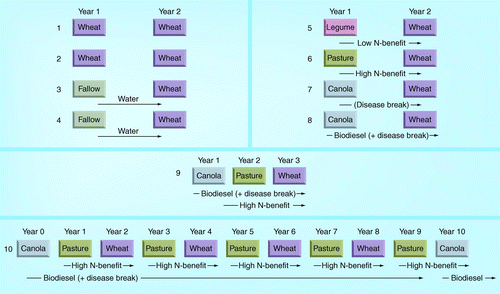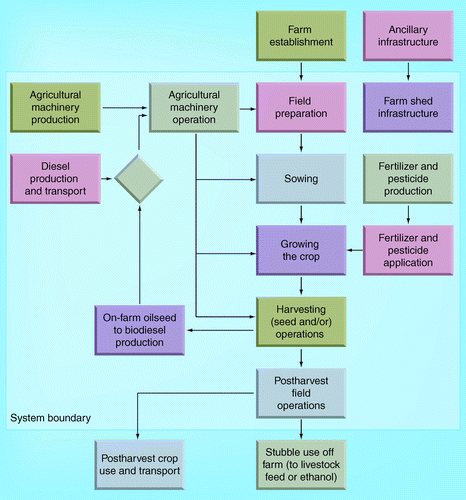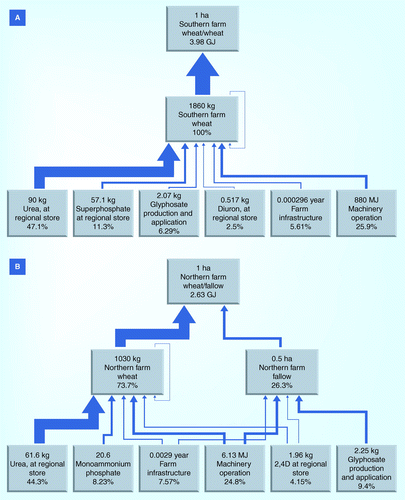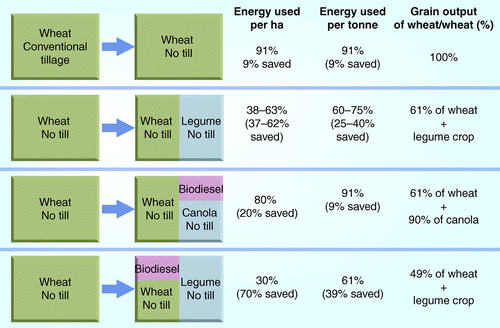Figures & data
Energy use in systems 1–8 represents the average energy used in years 1 and 2. System 9 results are averaged from years 1 to 3. System 10 results are the average of years 1–10, however, the system is assumed to be continuously repeating and therefore receives the benefits from at least one previous year (year 0).

These boundaries define the scope of the analysis and include the cumulative sum of inputs and processing of each component.

Thickness of the lines represent the relative contribution of each input to the total (percentage of energy contributed and actual applied amount are shown in each box, total amount is shown in the top box). The amount applied is the average application on the same farmed hectare over 2 years (which are identical in the southern system). Thus, the energy contribution into one hectare of a northern farm is equivalent to half a hectare of wheat and half a hectare of fallow. In the case of grain, a 1.8 t/ha wheat crop in the south includes the energy requirement of 1.86 tonnes of wheat grain due to the initial 60 kg/ha of seed applied at sowing. Contributions of less than 1% of total energy are not shown.


Table 1. List of treatment effects and the associated modeled farming systems used to analyze the energy variation according to management decisions.
Table 2. Inputs into each modeled rotation per hectare of the crop farmed according to the previous rotation farmed on that land.
Table 3. Nitrogen application rates required after legume rotations to achieve yields of 1.8 t/ha (no legume) and 2.2 t/ha (after a legume rotation) of wheat†.
Table 4. Comparison of energy usage per hectare and per tonne of grain produced per year in southern grain production systems and northern grain production systems with and without tillage averaged across both rotations.
Table 5. Comparison of energy usage per hectare and per tonne of grain produced per year in wheat and low N-benefit legume rotations and wheat and high N-benefit pasture rotations with continuous wheat rotations in Southern grain production systems.
Table 6. Comparison of energy usage per hectare and per tonne of grain produced per year in wheat/canola rotations using fossil diesel versus producing biodiesel with 10% of the canola production for use on the farm.
Table 7. Comparison of energy usage per hectare and per tonne of grain produced per year in 1:1:1 rotation of wheat/canola/high N-benefit pasture where 10% of the canola crop is used for on-farm biodiesel and 4:1:5 rotation of wheat/canola/high N-benefit pasture where 100% of the canola crop is used for biodiesel against a standard wheat/canola rotation.
Table 8. Energy efficiency of each modeled farming system calculated as the ratio of energy output of one tonne of grain equivalent in each farming system (proportioned between crops) to the energy inputs into growing the crops which make up that tonne.
Table 9. Nitrogen fertilizer and diesel fuel percentage of total inputs reported in similar studies.